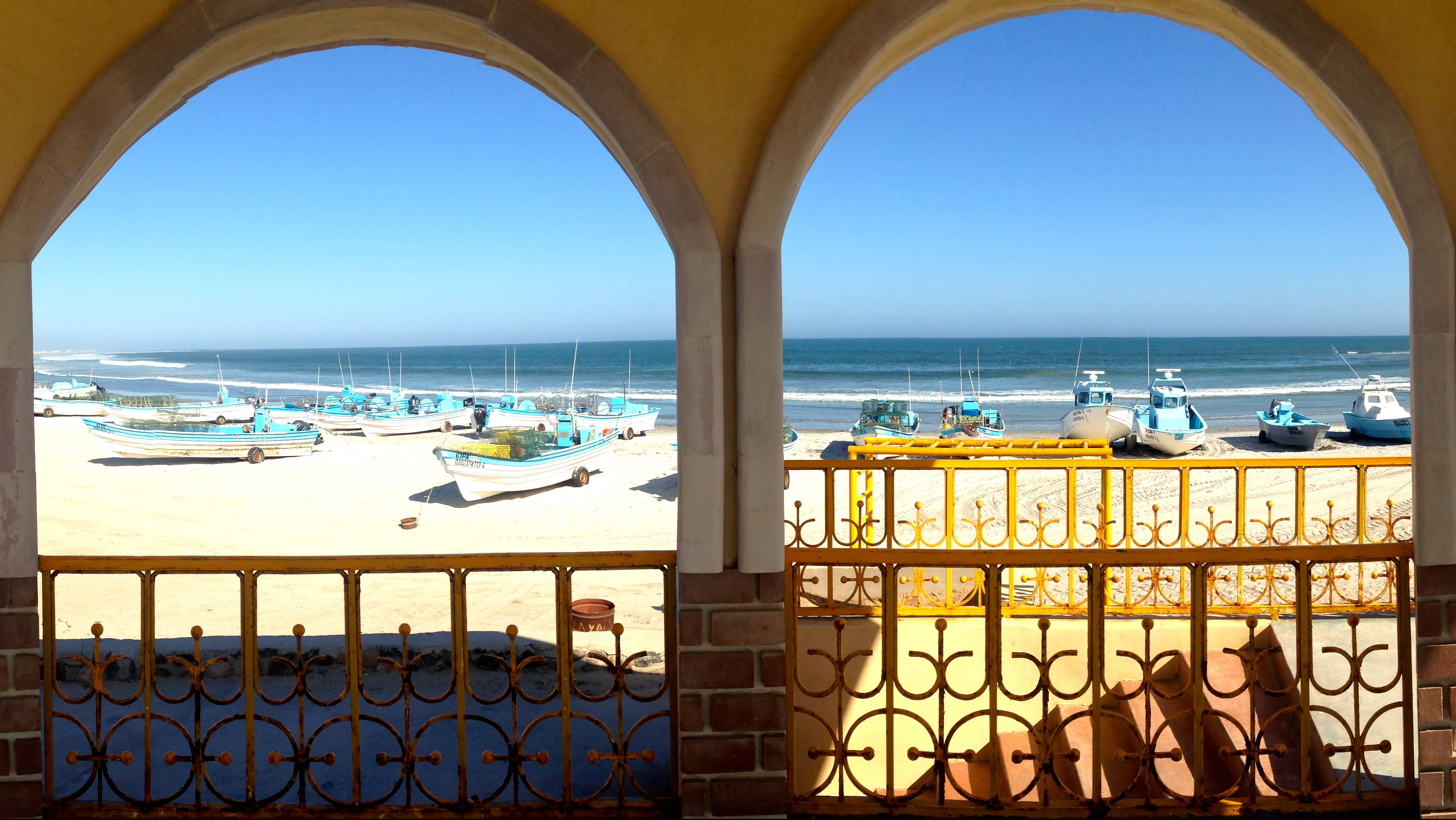Punta Abreojos: How a Small-Scale Fishing Cooperative Helped Build a Sustainable Community.

Along the Pacific coast of Baja California Sur, Mexico, the community of Punta Abreojos is of special interest to the marine science and conservation community. The Sociedad Cooperativa de Producción Pesquera Punta Abreojos S.C. de R.L. (SCPPPA) can be considered a success story for small-scale fisheries management1,2. Fisheries are often subject to overexploitation due to “open access” conditions in which there are no rules regulating the fishing effort or the amount of resources taken from an area3,4. The cooperative, co-management model used by the SCPPPA oversees a concession area in order to prevent fishery overexploitation. In turn, this management has maintained profitable fishery catches and social well being by working and making decisions collaboratively. When considering sustainable development of a community, there are three dimensions involved: social, economic, and environmental sustainability. Each dimension involves different values and can sometimes be in conflict with each other. However, when the dimensions are balanced and built together, the outcome can be a community with lasting ecological protection and socio-economic welfare5.
To understand why and how Punta Abreojos has sustained functionality, we asked the fishermen what they feel makes the cooperative successful. We used interview-based surveys to document the range of fisher opinions regarding their impressions of the impact the cooperative has on their lives and the community, their relationship with fisheries, and their perception of future threats and the progress of the cooperative.
Major Findings and Conclusions
Based on the interview responses, the fishers think it is more advantageous to work in the cooperative as opposed to fishing privately, outside the cooperative. The fishers believe they enjoy a better lifestyle while protecting their fisheries; 40% of responses mentioned they would “have nothing” without the cooperative; 23% said there would be no control, and 14% mentioned increased exploitation, resulting in resource depletion. According to 17% of the fishers, community development would have been negatively affected without the cooperative. All the fishers interviewed agreed that without the SCPPPA, the income from fisheries would have decreased. These responses show that fishers believe the cooperative has provided a sustainable livelihood, promoted resource sustainability, and improved social well being.
Punta Abreojos provides a unique example of a self-organizing community with a common mission and vision. There are many characteristics rooted in care and respect of both the environment and each other that have allowed Punta Abreojos to flourish. The sustainable development of Punta Abreojos has enabled the community to look towards the future and continue to progress. Through generations of dedication and teamwork, the community is stable enough to invest in infrastructure, a processing plant, and a local laboratory. It is often difficult to share ideas and experiences with other fishing communities when they are rural and isolated. Nevertheless, the fishers are hopeful that they can act as stewards for their environment and demonstrate to others that a sustainable development is possible.
Authors:
Nina Rosen*, Jazmin Nuñez Santiago ^, Dr. Mark Jacobsen + , Juan José Cota-Nieto**, Alfredo Girón*, Andrew F. Johnson*
Contact Information:
DOI:
10.13022/M30S6K
Affiliations:
*Scripps Institution of Oceanography, UC San Diego **Centro para la Biodiversidad Marina y la Conservación A.C., La Paz B.C.S. + University of California, San Diego ^ San Diego Mesa College
Acknowledgements:
We thank the Sociedad Cooperativa de Producción Pesquera Punta Abreojos S.C. de R.L. and the fishers of Punta Abreojos that were willing to participate in the interviews. Thank you, Jazmin, who acted as an interpreter and translator. Thank you for the collaborative effort between the Scripps Institution of Oceanography and the Gulf of California Marine Program that supported this research.
How to cite this story:
Nina Rosen, Jazmin Nuñez Santiago, Mark Jacobsen, Juan José Cota-Nieto, Alfredo Girón, Andrew F. Johnson (2018): Punta Abreojos: How a Small-Scale Fishing Cooperative Helped Build a Sustainable Community.. dataMares. InteractiveResource. https://doi.org/10.13022/M30S6K
References
1. Arce-Leree, R and Liera-Villavicencio, F (2005). 50 Aniversario Punta Abreojos,
S.C.P.P. “Punta Abreojos”, S.C.L.
2. Crespo-Guerrero, J. M., & Jiménez-Pelcastre, A. (2018). Orígenes y procesos territoriales del cooperativismo pesquero en la zona Pacífico Norte de Baja California Sur, México, 1850-1976. América Latina en la historia económica, 25(1), 196-238. http://alhe.mora.edu.mx/index.php/ALHE/article/view/841
3. Béné, C. (2003). When fishery rhymes with poverty: a first step beyond the old paradigm on poverty in small-scale fisheries. World development, 31(6), 949-975.
4. Cochrane, K. L. (2000). Reconciling sustainability, economic efficiency and equity in sfisheries: the one that got away? Fish and fisheries, 1(1), 3-21.
5. Ralph Hansmann, Harald A. Mieg & Peter Frischknecht (2012) Principal sustainability components: empirical analysis of synergies between the three pillars of sustainability,International Journal of Sustainable Development & World Ecology, 19(5), 451-459, DOI: 10.1080/13504509.2012.696220

